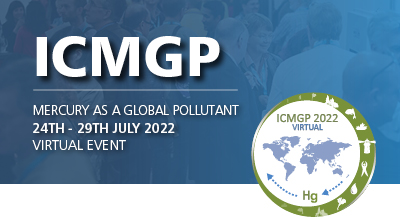| Abstract Title: | Using mercury stable isotope composition to estimate sources in Norwegian fjord ecosystems |
| Presenter Name: | Michael Bank |
| Company/Institution: | Institute of Marine Research, Bergen, Norway |
| Session: | Mercury in Marine Ecosystems |
| Day and Session: | Thursday 28th July - Session Four |
| Start Time: | 15:00 UTC |
| Co-Authors: | Michael Bank,Sylvain Berail,Julien Barre,Emmanuel Tessier,Atabak Azad,Zoyne Pedrero,David Amouroux |
Abstract Information :
Mercury (Hg) pollution and exposure in humans and biota are important environmental and public health issues that have garnered significant interest from scientists and policymakers. Hg cycling and bioaccumulation patterns in Norwegian fjord ecosystems are not well studied despite their importance for several blue food species. Here we evaluate spatial trends of Hg isotopic composition in two Norwegian fjord ecosystems, one impacted fjord (Hardangerfjord) with an industrial pollution point source at its interior (i.e., zinc smelter), and one reference fjord (Sognefjord), using the bioindicator tusk (Brosme brosme), which are widely distributed with low vagility, and inhabit deep-water ecosystems. In each fjord, Hg isotopic composition (mass dependent-?202Hg and mass independent-?199Hg fractionation) was measured in a wide array of ecosystem compartments including, tusk fillet tissue, marine sediments, and terrestrial geogenic samples (soils, live tree leaves, leaf litter, and mosses). Our results show that Hg sources were different among fjords and varied within the impacted fjord ecosystem in accordance with the Hg pollution spatial extent of the industrial point source. Hg isotopic composition was determined and mean (+ SD) values varied for fish (impacted fjord) = ?202Hg -0.29 + 0.09, ?199Hg 0.29 + 0.08, fish (reference fjord) = ?202Hg 0.42 + 0.11, ?199Hg 0.47 + 0.09, marine sediment (impacted fjord) = ?202Hg -0.35 + 0.15, ?199Hg 0.06 + 0.12, marine sediment (reference fjord) = ?202Hg -1.47 + 0.14, ?199Hg 0.05 + 0.05, and terrestrial geogenic background samples (soils, moss, leaf litter, forest leaves) = ?202Hg -1.55 + 0.35, ?199Hg -0.18+ 0.05. Marine sediments sampled next to the industrial point source was distinct (?202Hg -0.44, ?199Hg -0.07), and had elevated Hg (2.01 mg/kg dry wt.) compared to background. Our findings have important implications for remediation, blue food safety, and the effectiveness evaluation of the Minamata Convention on Mercury.



